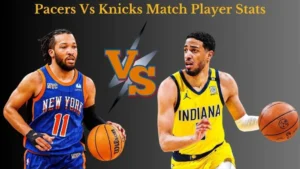Jazz Bands: A Deep Dive Into History, Styles, and Notable Groups
Jazz bands have been a cornerstone of music history, blending creativity, improvisation, and cultural influences to create a sound that’s both timeless and constantly evolving. This article will explore everything you need to know about jazz bands, from their rich history to the different styles, and we’ll spotlight some iconic bands that have left their mark on the genre. Let’s groove through the world of jazz!
The Origins of Jazz Bands

Jazz music emerged in the early 20th century, mainly in the vibrant city of New Orleans. But what made jazz truly unique was the way it incorporated a range of musical influences, including African rhythms, blues, ragtime, and European classical music. This melting pot of sounds birthed the genre, and with it came the rise of jazz bands that brought this music to life.
The Birthplace: New Orleans
New Orleans was a cultural hub in the early 1900s, with a thriving nightlife scene that set the stage for the birth of jazz. Here, musicians from diverse backgrounds played together, experimenting and blending different musical traditions. It was a place where traditional African-American music met European harmonies, and the result was something revolutionary.
Early Jazz Bands
Early jazz bands were often small ensembles consisting of a front line (trumpet, clarinet, and trombone) and a rhythm section (piano, banjo, drums, and bass). These groups emphasized improvisation, where musicians would take turns playing solos, adding their unique flair to the tune.
The Rise of Big Bands
As jazz grew in popularity, bands began to expand. By the 1930s, jazz bands had evolved into large orchestras known as big bands. These ensembles typically featured up to 15 musicians, including a full brass section, reeds, and a rhythm section. Big bands played a crucial role in popularizing jazz across the United States, especially during the Swing Era.
The Evolution of Jazz Styles and Bands
Jazz is not a monolithic genre. Over the years, it has branched out into various styles, each with its unique sound and influence. Jazz bands played a pivotal role in the evolution of these styles, adapting their line-ups and arrangements to suit the changing musical landscape.
Swing: The Big Band Era
The 1930s and 1940s were the heyday of swing, a style characterized by its upbeat, danceable rhythms and smooth melodies. Big bands led by Duke Ellington, Count Basie, and Benny Goodman were at the forefront of this movement. Swing music was more structured than the early jazz that came before it, with arrangements written out for each instrument.
Bebop: A New Approach
The 1940s also saw the birth of bebop, a style that shifted away from the dance-oriented big band sound to a more complex and fast-paced form of jazz. Bands were smaller, often consisting of just a few players, like a saxophone, trumpet, piano, bass, and drums. Pioneers such as Charlie Parker and Dizzy Gillespie led the bebop revolution, emphasizing rapid tempos, intricate melodies, and virtuosic solos.
Cool Jazz and Hard Bop
In the 1950s, jazz continued to diversify. Cool jazz, a more relaxed and melodic style, emerged on the West Coast, led by artists like Miles Davis and Chet Baker. Meanwhile, hard bop developed as an extension of bebop, incorporating elements of blues, gospel, and R&B. Bands in this era were known for their soulful sound and tight, groove-based compositions.
Fusion and Modern Jazz
The 1970s introduced fusion, a blend of jazz with rock, funk, and electronic music. Bands like Weather Report and The Mahavishnu Orchestra experimented with electric instruments and synthesizers, expanding the boundaries of jazz. Today, jazz bands continue to innovate, blending genres and incorporating new sounds to keep the music fresh and exciting.
Instruments Commonly Used in Jazz Bands
A jazz band’s sound is defined by the instruments its members play. Each instrument brings a unique texture to the overall sound, and the way they interact is part of the magic of jazz.
The Brass Section: Trumpet and Trombone
The trumpet has been a leading voice in jazz bands since the beginning, known for its bright, bold sound. Iconic trumpeters like Louis Armstrong and Miles Davis have used the instrument to craft unforgettable melodies and solos. The trombone adds a deeper, smoother tone, often used for counter-melodies and harmony lines.
The Reed Section: Saxophones and Clarinets
The saxophone is another staple of jazz, offering a wide range of tones from the high-pitched soprano sax to the deep, rich baritone sax. Saxophonists like John Coltrane and Charlie Parker brought the instrument to prominence with their virtuosic improvisation. The clarinet was more common in early jazz but remains an essential part of traditional jazz bands.
The Rhythm Section: Piano, Guitar, Bass, and Drums
The rhythm section is the backbone of any jazz band. The piano and guitar provide harmonic support, while the bass anchors the music with its steady, pulsing lines. Drums drive the rhythm, adding dynamics and energy. Together, these instruments create the foundation over which soloists can weave their melodies.
Other Instruments
Jazz is a flexible genre, and bands are not restricted to traditional line-ups. Depending on the style, bands might include instruments like the vibraphone, flute, or even the violin. Jazz’s open-mindedness to instrumentation is one reason it continues to grow and evolve.
Iconic Jazz Bands That Shaped the Genre
Over the decades, certain jazz bands have stood out for their contributions to the music. These groups helped to define and redefine jazz, pushing the genre forward in new and exciting directions.
Duke Ellington Orchestra
No list of iconic jazz bands would be complete without the Duke Ellington Orchestra. Duke Ellington was a master composer and bandleader who elevated jazz to new artistic heights. His band was known for its sophisticated arrangements, blending classical elements with jazz improvisation. Tracks like “Mood Indigo” and “Take the A Train” are still celebrated today.
Count Basie Orchestra
The Count Basie Orchestra was a driving force in the swing era, known for its rhythmically tight, blues-infused sound. Basie’s minimalist piano style allowed his bandmates to shine, especially the horn section. The band’s signature tune, “One O’Clock Jump,” remains a jazz standard.
The Miles Davis Quintet
Miles Davis was known for his ability to adapt and change with the times, and his quintet in the 1950s was one of the most influential groups in jazz history. Featuring musicians like John Coltrane and Cannonball Adderley, the quintet explored the boundaries of bebop, hard bop, and modal jazz. Davis’s 1959 album Kind of Blue is one of the best-selling jazz albums of all time.
The Modern Jazz Quartet
The Modern Jazz Quartet (MJQ) was unique for its refined, chamber music-like approach to jazz. Blending elements of classical music with bebop, MJQ created a polished sound that was both accessible and sophisticated. They are remembered for hits like “Django,” a tribute to the legendary guitarist Django Reinhardt.
Weather Report
As one of the leading bands in the jazz fusion movement, Weather Report brought a new sound to jazz in the 1970s. Their music blended jazz improvisation with rock, funk, and world music elements, resulting in a style that was complex yet groove-oriented. The band’s track “Birdland” became a massive hit, crossing over to mainstream audiences.
The Role of Improvisation in Jazz Bands
Improvisation is at the heart of jazz. Unlike other genres, where musicians follow a strict score, jazz musicians use the basic structure of a song as a jumping-off point for spontaneous creativity. This element of improvisation is what makes each jazz performance unique and thrilling.
The Language of Jazz Improvisation
Jazz improvisation is often compared to a conversation. Musicians listen to each other and respond, creating a dialogue through their instruments. To improvise effectively, a musician must have a deep understanding of melody, harmony, and rhythm, as well as the ability to think quickly and creatively.
How Jazz Bands Improvise Together
In a jazz band, improvisation is a collaborative effort. During a performance, each musician may take turns soloing, with the rest of the band providing support. This dynamic interplay between soloist and ensemble is one of the most exciting aspects of a jazz performance, as it requires both technical skill and the ability to listen and adapt in real time.
Famous Improvised Solos
Throughout the history of jazz, there have been many memorable improvised solos that have become legendary. Louis Armstrong’s trumpet solo in “West End Blues,” Charlie Parker’s saxophone solo in “Ornithology,” and Miles Davis’s trumpet solo in “So What” are just a few examples of improvisation that have shaped the sound of jazz.
The Influence of Jazz Bands on Popular Music
Jazz bands have had a profound influence on the broader landscape of music, from rock and roll to hip-hop. Many popular genres have borrowed elements from jazz, including its emphasis on rhythm, improvisation, and sophisticated harmonies.
Jazz and Rock Music
In the 1960s and 1970s, rock bands began to experiment with jazz elements, leading to the birth of jazz-rock fusion. Bands like Chicago, Blood, Sweat & Tears, and Steely Dan integrated jazz instruments and improvisation into their rock songs, creating a hybrid sound that appealed to both jazz and rock fans.
Jazz and Hip-Hop
Hip-hop has also drawn inspiration from jazz, particularly in its use of samples. Artists like A Tribe Called Quest and De La Soul sampled jazz records to create beats that were rich in texture and groove. More recently, artists like Kendrick Lamar have collaborated with jazz musicians to blend the two genres in new and innovative ways.
Jazz Influence in Modern Pop
Even today, pop artists continue to draw inspiration from jazz. Singers like Amy Winehouse and Norah Jones have incorporated jazz elements into their music, while artists like John Mayer have explored jazz-influenced guitar playing. This ongoing influence speaks to jazz’s enduring appeal and versatility.
The Legacy and Future of Jazz Bands
Jazz bands have come a long way from their early days in New Orleans, but the essence of the music remains the same: a celebration of creativity, spontaneity, and musical conversation. As the genre continues to evolve, new generations of musicians are finding ways to keep jazz alive and relevant.
The Globalization of Jazz
Today, jazz is a global phenomenon. Musicians around the world have embraced the genre, adding their unique cultural influences to the music. This has led to the emergence of styles like Afro-Cuban jazz, Brazilian jazz, and Indo-jazz fusion, each bringing a new flavor to the traditional jazz sound.
Modern Jazz Bands to Watch
While the golden age of big bands may be over, there are still plenty of modern jazz bands making waves. Groups like Snarky Puppy, Kamasi Washington’s band, and The Bad Plus are keeping jazz fresh and exciting for new audiences. These bands blend traditional jazz with elements of funk, rock, and hip-hop, showing that jazz is as innovative and vibrant as ever.
Why Jazz Bands Will Never Die
The reason jazz has survived for over a century is its adaptability. Jazz musicians are not afraid to take risks and push boundaries, and this spirit of experimentation ensures that the genre will continue to grow and evolve. As long as there are musicians willing to explore the unknown, jazz bands will have a place in the world of music.
Conclusion: The Endless Groove of Jazz Bands
Jazz bands are more than just musical groups; they are living embodiments of creativity, collaboration, and cultural expression. From the smoky clubs of New Orleans to the grand stages of Carnegie Hall, these bands have brought joy, excitement, and a sense of connection to audiences around the world. Whether it’s the energetic swing of a big band or the intricate improvisation of a bebop combo, jazz bands continue to captivate listeners, proving that the spirit of jazz is alive and well.
With a rich history and a future full of possibilities, jazz bands are a testament to the power of music to bring people together and to express the inexpressible. So next time you hear a jazz band playing, take a moment to appreciate the artistry, the spontaneity, and the sheer joy of this timeless genre.








Post Comment